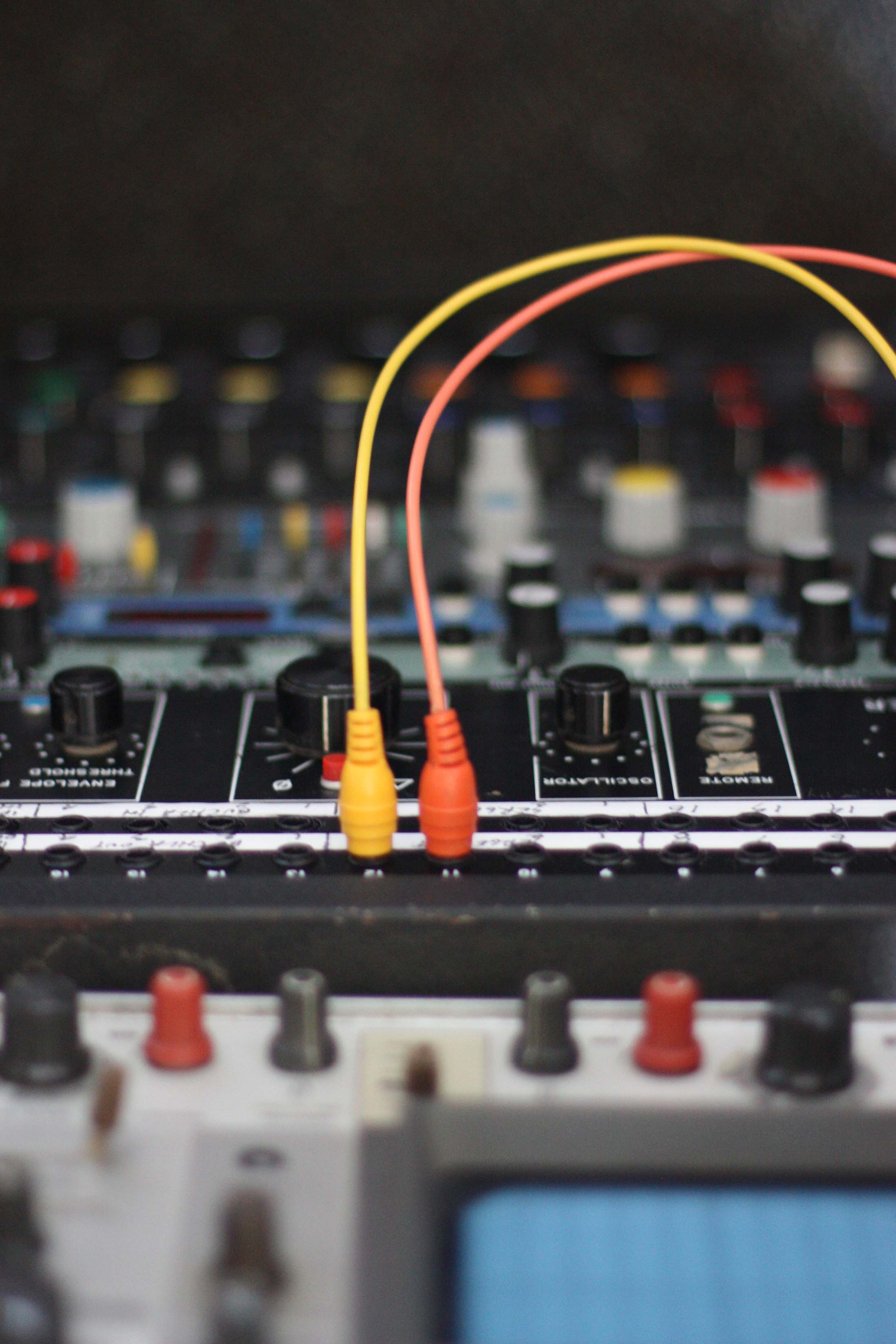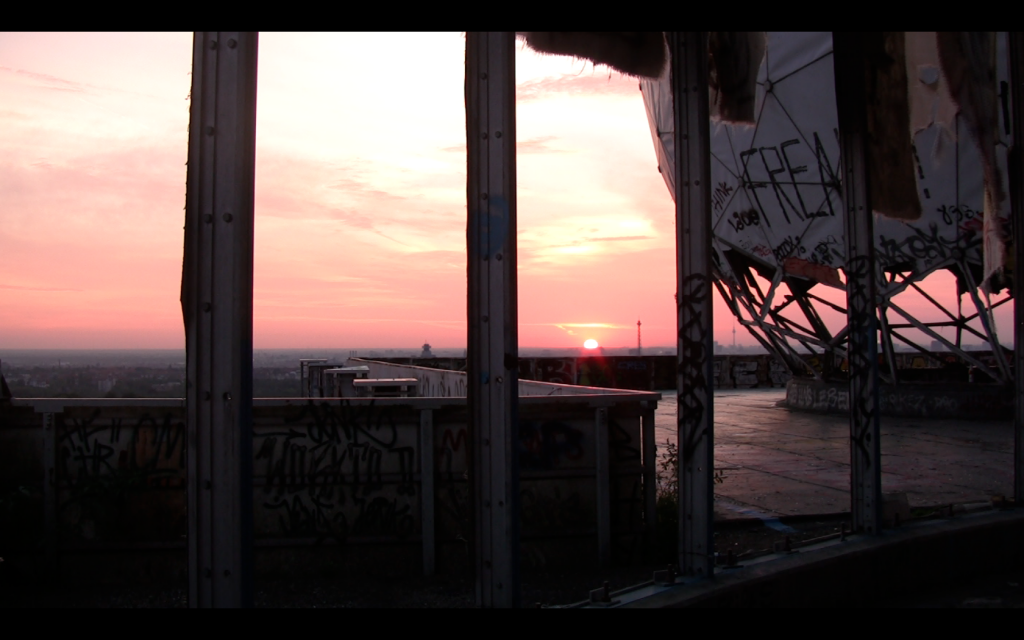In his talk at the Intonarumori series at the MFA today, Seth Cluett opened with an image of himself lying in a bathtub listening to the sounds of his apartment through water. I’d like to open with a similar gesture of personal sound and architecture. This is a view from Teufelsberg, literally “the devil’s mountain,” in the western part of Berlin. It was an American listening station which still today has a haunting resonance to it, as you can hear. It reminds us of the inauspicious listening habits we have developed in the modern West broadly, lest we think this was a communist abberation. But it also reminds us that these stories and even ideas have a particular place—whether as political or intellectual histories. Berlin as a place plays an important role in both of today’s papers, for practices of surveillance and for the development of media archaeology.
While some of our pairings for Hearing Modernity have offered more distantly related perspectives, our papers for this session resonate strongly with one another. Broadly, they pose the question: what is a sound archive? That is, how is it constituted? When is it, or how does it generate and warp time, both as history and duration? How does listening to an archive in the present affect that archive’s ontology and meaning? What kind of knowledge is made available and also obscured by sound archives? They provide rich answers in practice (at the Stasi archive) and in theory (from Homer to digital sound). I would like to briefly highlight some key points from each before offering some questions to both speakers.
Karin Bijsterveld’s paper on “Dissecting Sound” in the Stasi archive explores modes of listening and ways of organizing knowledge about sound. Her account of the Stasi project of speaker identification offers important insights about sound surveillance, the politics of listening, and the multiplicity of archives. Her revelation at the end of the paper—that in fact there were multiple banks of voice recordings—remind us that archives are always already multiple. Even when they are no longer being added to, their ontological status remains fraught, contingent on users accessing and understanding the kinds of knowledge they encode. She positions this history within a broader project about knowing-through-sound, what Steven Feld has called acoustemology. In particular, she contrasts embodied knowledge, bound up in the body, ears, and mind of an individual, with mobile knowledge, an open system of information sharing. The Stasi archive offers a cautionary tale of the ways that archives can overrun themselves, or more broadly, how structures of knowledge and sound can quickly overrun human agency and planning. She then situates this particular archive in a broader context of modes of listening, or “sonic skills.”
One tension I see in this paper is the binary Bijsterveld posits regarding embodiment in opposition to mobile forms of knowledge. As with most binaries, this distinction seems to be more of a spectrum. In the examples from the Stasi archive itself, we can see examples of knowing-through-sound circulating (e.g., guidelines for how to describe sounds), though clearly such circulation was inadequate, as evidenced by the creation of multiple, parallel archives. On the flipside, embodied forms of knowledge don’t necessarily proscribe circulation, as evidenced by any oral tradition. We might imagine a Latourian perspective that folds in both the forms of knowledge bound to the human body and to its circulation through objects, writing, classification systems, and so on.
One other issue where Bijsterveld’s account leaves me wanting more is the question of who is being listened to. She vividly recounts the widespread practice of East German listening to “the lives of others.” But it’s worth remembering that there were other others whose lives were also surveilled. For example, a number of those “unofficial collaborators” (inofizielle Mitarbeiter) who spied for East Germany were Turkish immigrants specifically recruited to spy on fellow immigrants. The most famous case of such “foreigners” in espionage might well be Hüseyin Yıldırm, a Turkish mechanic who worked at Teufelsberg and became a courier for American signals intelligence officer James Hall. But in more mundane cases, these Mitarbeiter also spied on mosques and other organizations that were considered politically reactionary or nationalistic. In considering how the archive—and sound studies, more broadly—listens to and documents the lives of others, it’s worth bearing in mind that there are other others who fall outside many of our master narratives.
Wolfgang Ernst’s paper, on “Tempaural Memory,” brings the tools of media archaeology to bear on the question of sonic culture. In its strongest form, he describes this as the proposition that “the human auditory apparatus is forced to obey laws imposed by the media apparatus; the historicity therefore is deferred by and to the technology” (3).[1] Critics might well disparage this premise as “technological determinism.” But as Ernst shows here, this line of thinking highlights the contingencies and limitations of human agency, especially in the contexts of the archive of modernity, where the apparatus, he argues, is the principal archaeologist. I highlight here three points that Ernst makes that I find significant contributions to our ongoing discussion in Hearing Modernity:
– First, sound and especially recorded sound is radically ahistorical. It cannot simply be subjected to discourse analysis or historical contextualization; rather, the technologies of its recording, storage and reproduction must be accounted for, particularly in the way they fold historical time when we listen to them in the present.
– Second, sound offers fascinating potential for conducting media archaeology. One could argue historically or philologically with a “basic premise of unqualified trust” in Homer. But the idea that sound can function as a tool for understanding media and not simply as an object of study has exciting implications for scholarship, as we see already with the rise of sonic ethnography and other practices in sound.
– Third, Ernst challenges the reductive sonic paradigms of media archaeologists like Friedrich Kittler, who made little distinction in sound practices after the advent of the phonograph. But as Ernst suggests here, the materiality and temporality of the “real” differs significantly with phonographic, electromagnetic and digital recording. Furthermore, his notion of sonicity–that sound unfolds in way best understood as analogous to sound–suggests a powerful new way of considering sound’s relationship to modernity, not as a symptom of it but as a critical generator of that modernity, and by extension of historical time more generally.
As in Bijsterveld’s paper, I see a tension here that is both productive but also leaves me wanting greater clarification. Ernst suggests that sound recordings entail presence—that they conjure a real that existed sometime in the past. At the same time, however, he calls for a practice of listening to archaeological traces, or those technological signifiers that negate a presence-based listening. Can we simultaneously listen for presence and archaeological traces? Or do the sonic traces of technology prevent us from experiencing (or help us resist?) presence?
Additionally, while Ernst largely rejects the practice of listening to the acoustic signified in favor of listening to the technical signifier, I wonder if he doesn’t miss out on some important particularities—which are in many ways, the power of Bijsterveld’s paper. For example, like Thomas Edison, Édouard-Léon Scott first recited a children’s song into his phonautograph. But “Au Clair de Lune” is also a striking commentary on inscription and audiovisual sensation, delivered by an acousmatic nighttime visitor:
In the light of the moon, Pierrot, my friend / Loan me your pen to write something down
My candle’’s dead, I’ve got not flame to light it / Open your door, for the love of God!
We must remember that sometimes meaning means.
Let me conclude with two questions for both speakers, drawing largely on other ideas from within these papers. Both papers make the case for acoustemology, or the possibility of knowing through sound. This has been a tremendously important development of the past half-century, but it also obscures other experiences of listening, such as the recently much-maligned practice of listening for pleasure. Paradoxically, in demanding that sound yield knowledge, we seems to have returned back to the realm of the hermeneutic. In essence, we have substituted articulable knowledge bound to writing or seeing with articulable knowledge bound to sound. Instead, would it be possible to imagine other modes of listening that build on what Wolfgang Ernst describes here as aesthetic—that is, bound to and with no other aim than listening itself? Or perhaps, thinking of Herbie Hancock’s lecture right now, as part of a process of performance or poetics that certainly entails knowledge but also cannot be reduced solely to knowledge? And in doing so, could the humanities, sound studies, or however we want to carve up the world, defy prevailing regimes of rationalized knowledge in a productive way?
This leads to my second question: what are the political stakes of the kinds of listening modes here? If sound recording is granted ahistorical status, what might that mean for the politics of sonic historiography? Bijsterveld shows (and perhaps could show more) how the context of listening matters: who listens in what ways when? Ernst has constrained the ears of the historian here, but in doing so, he has also perhaps constrained the perceptual agency (as theorized by our own Ingrid Monson) of other would-be listeners. On the other hand, his emphasis on memory raise questions for the specific examples Bijsterveld gives here: have the meanings of these recordings shifted over time since German reunification? How are those meanings contested today? Despite arguments at the time that the fall of the Berlin Wall marked the “end of history,” what kinds of histories play out still today through sound because of these recordings?
[1] Elsewhere in the paper, Ernst describes his project in less charged terms: “Media-archaeological listening to the sonic past is rather about listening to the technical signifier than to the acoustic or musical signified.”





Leave a Reply